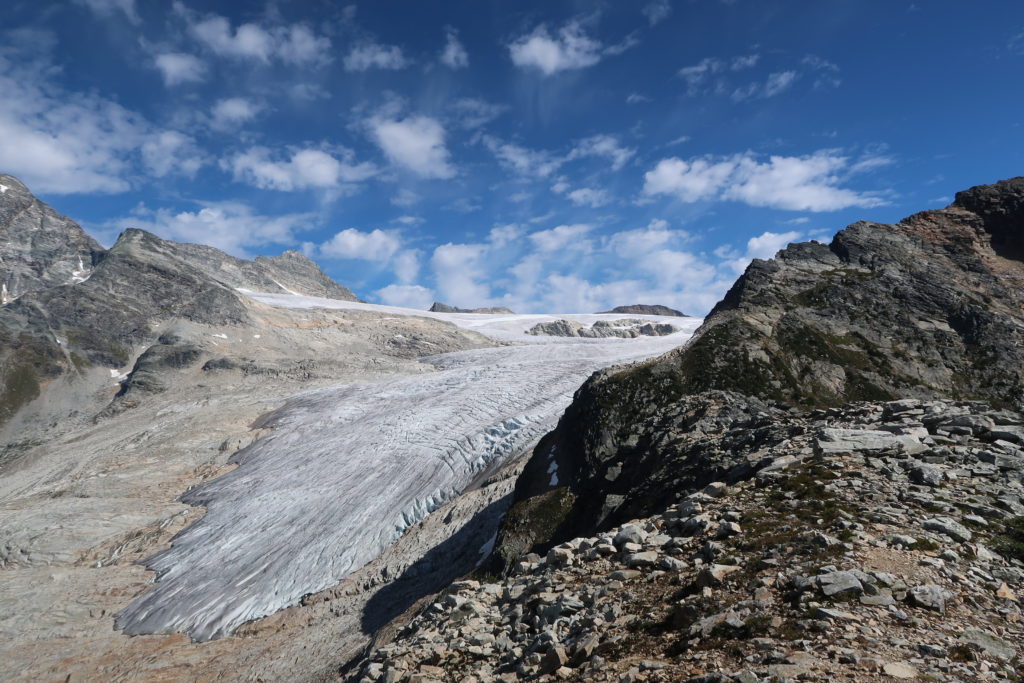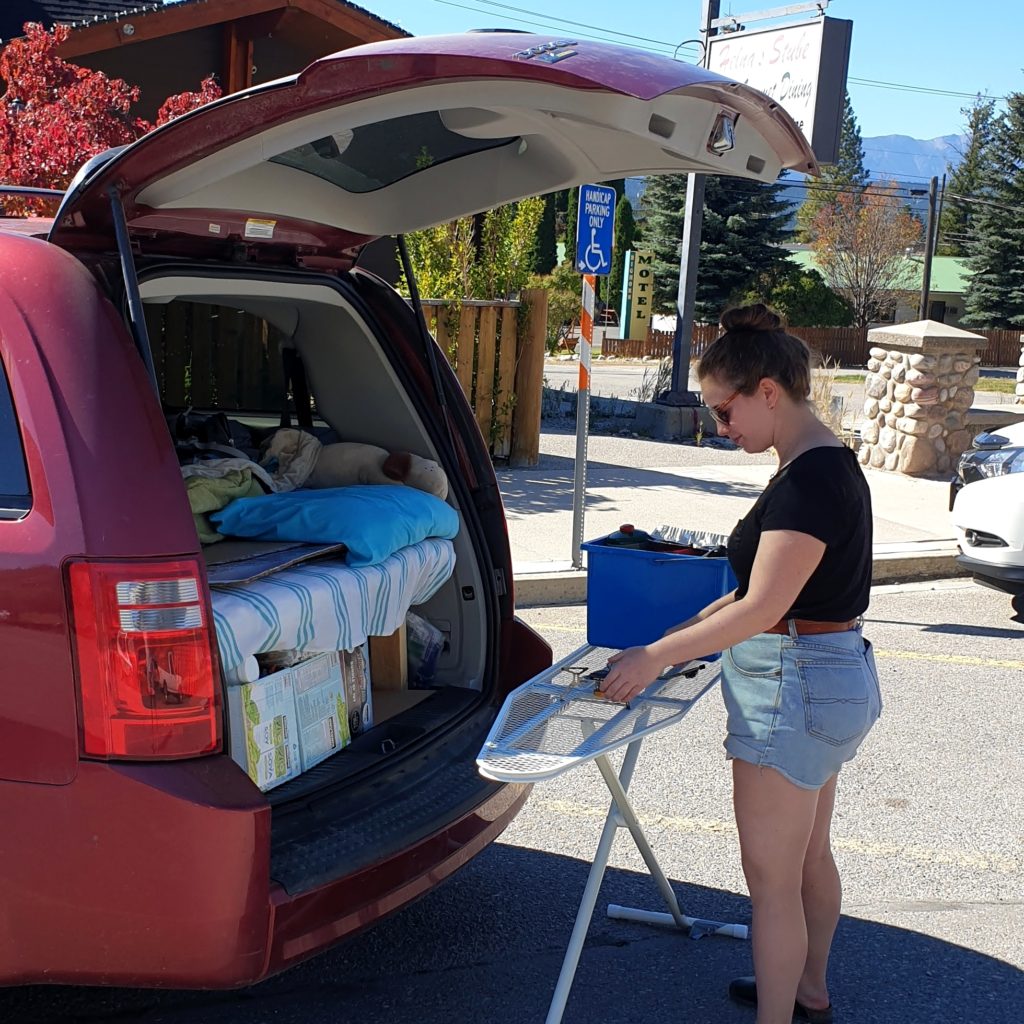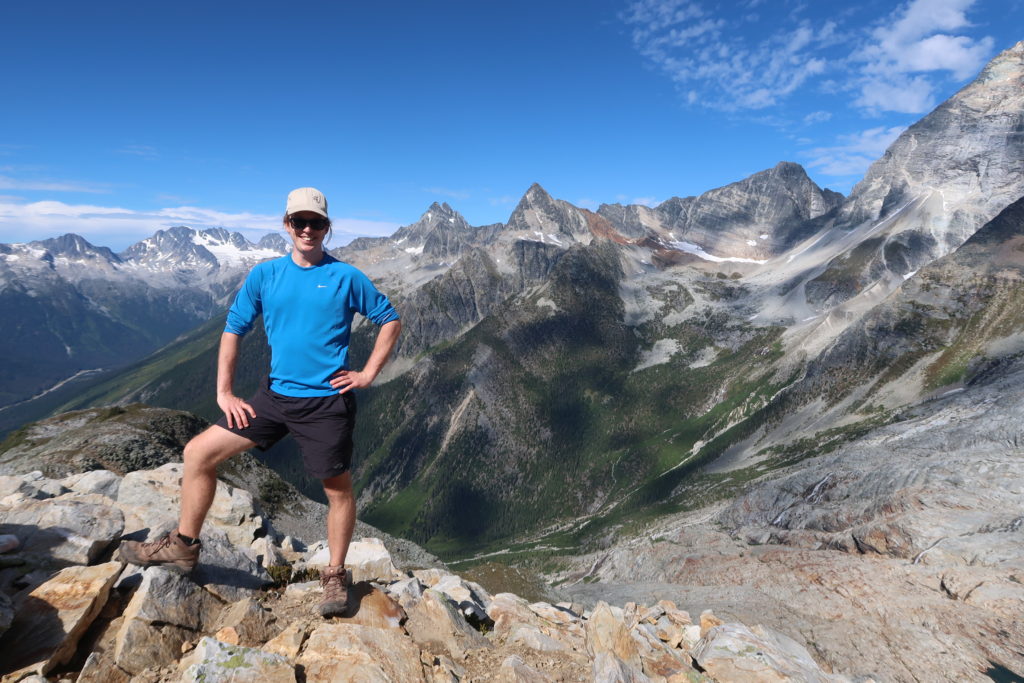Glacier National Park, featuring a staggering 400 glaciers within its boundaries, was only an hour’s drive away. It was another chilly morning and after leaving the warmth of the car, we briskly started our hike to Lookout Mountain, a peak offering close-up views of Illecillewaet and Asulkan Glaciers, as well as the more distant Tupper Glacier. The trail was a decent 1100m elevation gain and 13km return, but the panoramic view at the top was well worth it. Also of interest were the almost 100 year old ruins of the Glacier House, a cultural relic with a fascinating history.
In the late 1800s, the federal government contracted the Canadian Pacific Railway Company to build a route through the mountains and into Alberta. The general manager of the railway recommended the government create national parks along the rail line, which they did: Banff, Glacier and Yoho National Parks were established in the mid-1880s.
The railway company built a dining station in Rogers Pass before the line was even completed. Due to its popularity, the dining hall and few chalet rooms were expanded with tearooms, mountain climber cabins, and even a bowling alley. An interesting extract from the Parks Canada website describes the time well: “The railway changed how people viewed the mountains. Once considered a barrier to nationhood and progress, the mountains were now viewed by many as a major tourist attraction. Aggressive advertising, outdoor books, photo exhibits and the Swiss Guides who worked at the hotel all highlighted the intrinsic – and commercial – value of mountains. Glacier House was expanded twice, in 1892 and 1904, and the hotel soon set new standards for service and luxury. Glacier House was built before its better-known sister properties, the Banff Springs and Hotel Vancouver, and it was the inspiration for the Chateau Lake Louise.”

Glacier House in front of Great Glacier, 1909 (from Musée McCord Museum) 
Train cars at Glacier House, 1987 (from Musée McCord Museum) 
The Glacier House ruins on our hike in September
Unfortunately, competition from hotels in the other national parks as well as extreme difficulties in maintaining railway operations were the demise of Glacier House. Large snowfall and frequent avalanches derailed trains and killed workers, and with the Illecillewaet Glacier (then-called Great Glacier) receding, the resort’s greatest attraction was disappearing from view. Ultimately, this change was for the good, as the railway built a safer, avalanche-free tunnel route for the line to avoid the copious snowfall. In the winter today, artillery is actually used to protect against natural avalanches reaching the highway. Fortunately, we didn’t come under any artillery fire during our hike in September!

Close up to the Illecillewaet Glacier
Our clocks went forward one hour as we drove towards Edgewater and our Workaway hosts from June. After the big hike, we were thrilled to have a hot shower and bedroom for the night. We had arranged to stay for a few days and we took the opportunity to catch up, go horse riding… and visit our favourite thrift store nearby! We refrained from buying as much as we had during our previous stay with them, but we did end up getting our most gypsy-like item to date: a collapsible ironing board to use as a table! The days passed quickly, and with another farewell, we continued on our journey and headed out of the province.

A welcome sight: a comfortable bed and room bigger than the inside of our van! 
Some fresh bread I made as a thank you for our hosts 
Our most gypsy purchase yet – a $3 ironing board from the thrift store 
My first time riding Jingles, in the round pen we helped construct 
Mel giving Jingles a farewell hug 
Catching up over delicious pizza and beer


